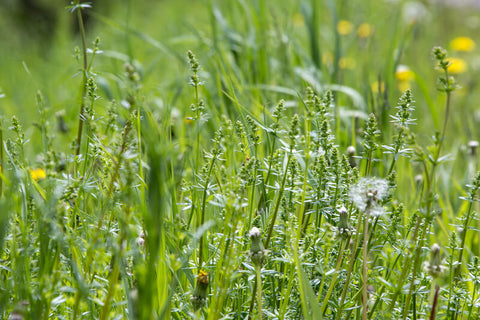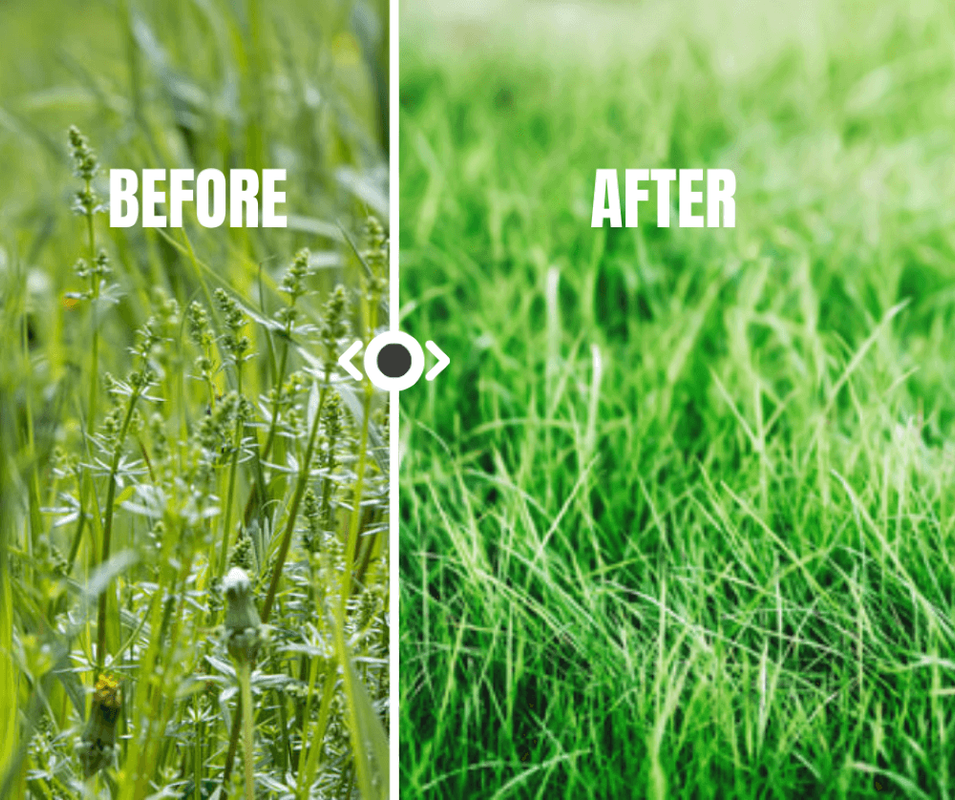That first mow on a brand-new lawn is tempting, isn't it? But before you fire up the mower, there's a crucial question to answer: how long should you really wait? Rushing this step can have lasting effects on your lawn's health. Understanding the optimal timing and the reasons behind it is key to establishing a strong, vibrant turf.
The Recommended Wait Time Before Cutting Newly Grown Grass

Image Source: sarawuth pamoon, Vecteezy
You've just planted your fresh patch of green grass and are now wondering how tall should you let new grass grow before cutting. In our fast-paced world, getting caught up in the rush is easy. Did you know that letting new turf grow before mowing is crucial for its long-term health? Allowing those tender blades to establish strong roots is the key to a lush and vibrant lawn.
So, how long should you wait before cutting new grass? Experts recommend waiting a few weeks. This typically takes 2 to 3 weeks for seed and 1 to 2 weeks for sod. A well-timed first cut ensures your new lawn's resilience against stressors while promoting denser growth.
What is the specific rationale for avoiding the immediate use of the mower? Enabling the growth of new grasses facilitates the deep penetration of their roots into the soil. This builds a strong base for improved absorption of nutrients and retention of water - vital components for a thriving turf.
Longer grass blades also provide shade for the soil surface, preventing weed growth and reducing water evaporation.
To grasp the importance of letting new grass grow before mowing, I will also discuss the grass growth cycle.
Understanding the Growth Cycle of Grass

Image Source: papan saenkutrueang, Vecteezy
Grass growth can be divided into three main stages: germination, establishment, and maturity. During germination, the seed absorbs water and sprouts. This is a critical stage where the grass is actively growing roots and establishing a strong foundation. It is essential to avoid any disturbances during this stage, including mowing. If you do so, it can interfere with the delicate root development process.
Once the grass has successfully established its roots, it enters the establishment stage. This stage is characterized by rapid growth as the grass blades begin to emerge and spread.
Once the grass has fully grown and developed, it will reach its best height and thickness. Now you might consider that the cutting time is approaching. So, I shall move on to the discussion of the most opportune moment for mowing newly grown grass.
Optimal Timing for Mowing New Grass

Image Source: Dreamstime
Here are some factors to consider when deciding how long to let new turfed lawn grass grow before its first cut:
- Grass height and growth rate
- Weather and season
- Watering routine
- Optimal height
- Signs it's time to mow
What happens if you delay the cutting? Let's discover.
Negative Effects of Delayed Cutting

Image Source: Dreamstime
Negative impacts on overall lawn health if new grass is left uncut for too long:
-
Damage: Allowing new grass to grow excessively tall or dense can lead to damage. The weight of overgrown blades puts stress on the delicate root system, potentially causing harm and hindering healthy growth.
Also, excessively tall, or dense grass blades can cause harm not only to themselves but also to other elements within your yard. As an example, they might impede the sunlight from reaching the plants that are shorter. They might also hinder the sprinkler systems from watering your lawn properly.
- Worry: Neglecting to cut new grass in a timely manner may trigger concerns about its well-being. As homeowners, we want our lawns to thrive. So, neglecting proper maintenance can be worrisome.
- Disease: A new lawn with longer grass blades creates a favorable environment for diseases such as fungus and mold.
- Weed invasion: Overgrown grass provides an opportunity for weeds to invade your lawn. Weeds are quick to take advantage of any available space. They crowd out the desired turf grass and compromise the overall aesthetic appeal.
- Nutrients: When new grass grows too long before being cut, it competes with established plants for essential nutrients. This competition can lead to weakened growth in both the new and existing vegetation.
Overgrown vs. Freshly Cut Grass

Final Thoughts on Allowing New Grass to Grow Before Cutting
There are some key considerations to keep in mind.
Mowing frequency for newly seeded lawns should be adjusted accordingly. It is recommended to wait until the grass reaches a height of around 3-4 inches before the first mow. This allows the roots to establish themselves firmly in the soil and promotes healthier growth.
Optimal timing for mowing depends on factors such as weather and grass type. It's best to avoid cutting wet or damp grass. The rationale behind this is that it may cause clumping and uneven cuts.
Waiting too long before cutting can have consequences. Delayed cutting may cause overgrown grass that becomes difficult to manage. It can also lead to increased weed growth and reduced overall lawn health.
Now that you have a better understanding of how long to let new grass grow before cutting, act! Start by assessing your lawn's current state and make informed decisions based on its specific needs. With proper care and attention, you'll be rewarded with a lush green carpet under your feet.
Ready to give your new lawn the perfect first cut?
Frequently Asked Questions
Can I cut my newly seeded lawn too early?
It's best to wait until the grass reaches a height of around 3-4 inches before the first mow. Cutting your newly seeded lawn too early can disrupt root development and hinder proper growth.
How often should I mow my newly seeded lawn?
The frequency of mowing for newly seeded lawns depends on how quickly the grass grows. Aim to mow when the grass reaches a height of 3-4 inches.
Will waiting too long before cutting my new grass affect its health?
Yes, delaying cutting for an extended period can cause overgrown grass that becomes difficult to manage. It may also promote weed growth and negatively impact overall lawn health.
Can I use a regular lawnmower on new grass?
Yes, you can use a regular lawnmower on new grass if it is set at an appropriate cutting height. Adjust the mower's blade height to avoid cutting the grass too short. An inappropriate blade height can stress the plants and impede healthy growth.
Have you nurtured new grass? Share your experience.

